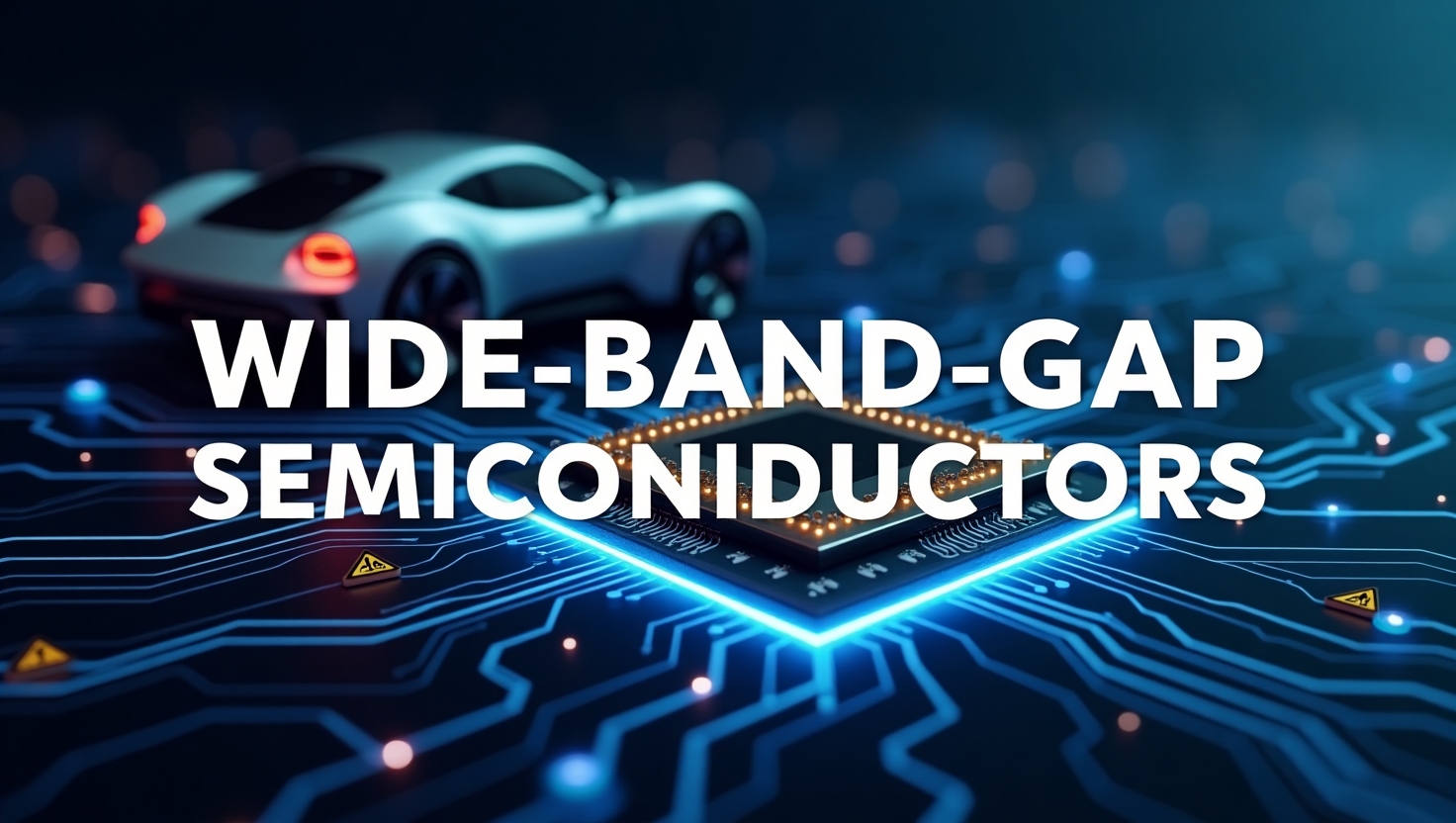Introduction
Wide-bandgap (WBG) semiconductors, specifically Gallium Nitride (GaN) and Silicon Carbide (SiC), have emerged as transformative technologies in the rapidly evolving landscape of electric vehicle (EV) power electronics. As automakers strive for higher efficiency, longer driving range, and more compact powertrain systems, WBG devices offer compelling advantages over traditional Silicon (Si) components. However, alongside their impressive performance benefits, WBG devices introduce new design challenges and reliability concerns. This article presents a comprehensive analysis of the rise of WBG semiconductors in EV applications, evaluating both their benefits and associated risks that professional engineers must consider.
Benefits of WBG Semiconductors in EVs
One of the primary drivers for adopting WBG semiconductors in EVs is their superior switching performance at high frequencies. GaN and SiC devices exhibit significantly lower switching losses compared to Si counterparts, enabling power converters such as on-board chargers (OBCs), inverters, and DC-DC converters to operate at higher frequencies, typically in the 100-500 kHz range.
This high-frequency capability translates into smaller passive components, reducing the overall size and weight of powertrain subsystems—critical factors in automotive design. For instance, SiC-based traction inverters can achieve volumetric reductions of up to 40% compared to silicon-based designs.
Thermal management is another notable advantage. With lower conduction and switching losses, WBG devices produce less heat, allowing for simpler and more compact cooling solutions. In high-power applications like traction inverters, SiC modules can operate efficiently at junction temperatures exceeding 175°C, enhancing thermal headroom.
| Parameter | Silicon (Si) | Silicon Carbide (SiC) | Gallium Nitride (GaN) |
| Switching Frequency | <20 kHz | 50-200 kHz | 200-500 kHz |
| Efficiency | ~95% | 96-98% | 96-98% |
| Max Junction Temp | 150°C | 175-200°C | 150°C |
| Size Reduction Potential | Baseline | 20-40% | 30-50% |
Risks and Challenges
Despite their advantages, WBG semiconductors introduce complexities that engineers must navigate. Foremost among these is the cost factor. SiC and GaN devices remain significantly more expensive than Si counterparts, both in terms of raw device pricing and the accompanying gate driver circuitry required to manage high-speed switching.
Electromagnetic interference (EMI) and electromagnetic compatibility (EMC) issues are pronounced due to the rapid voltage and current transitions inherent to WBG devices. This necessitates meticulous PCB layout strategies, advanced filtering techniques, and robust shielding—all of which can complicate design cycles and increase costs.
Reliability in harsh automotive environments remains an area of active research. While SiC devices have demonstrated impressive robustness, early field deployments have revealed susceptibility to cosmic ray-induced failures, particularly in high-altitude scenarios. Similarly, GaN devices, while excellent at high-frequency operation, have shown sensitivity to overvoltage conditions and limited avalanche ruggedness.
Another pressing challenge is the shortage of design expertise. The transition to WBG technology requires a paradigm shift in design practices. Engineers need specialized knowledge in high-speed PCB layout, thermal design, and advanced gate driver circuits. Industry surveys indicate a significant skills gap, especially in Tier-1 automotive supplier ecosystems.
Case studies have highlighted these challenges. For example, a major automotive OEM reported elevated EMI levels during prototype testing of a SiC-based inverter, necessitating an additional design iteration to comply with CISPR 25 standards. Similarly, GaN-based DC-DC converter designs have encountered voltage overshoot issues due to inadequate gate driver optimization.
These technological shifts are closely tied to the broader EV ecosystem, including the expansion of EV infrastructure. Recent market analyses, such as this report on the GCC electric vehicle charging station market, highlight the accelerating pace of EV adoption and infrastructure development, which in turn increases the demand for high-efficiency power electronics.
Design Considerations and Best Practices
Successful integration of WBG semiconductors in EV systems demands rigorous adherence to design best practices. For gate drivers, engineers should prioritize devices with adjustable gate resistance, Miller clamp features, and negative gate voltage capability, especially for SiC MOSFETs, to prevent unintended turn-on events.
PCB layout plays a pivotal role in minimizing parasitic inductances that exacerbate voltage overshoot and ringing. Strategies such as Kelvin-source connections, tight loop designs, and controlled impedance traces are essential to maximize switching performance and reliability.
Thermal design should account for the higher permissible junction temperatures of WBG devices but must still ensure adequate derating to account for field variations. Co-designing power modules with advanced cooling systems, such as direct liquid cooling or heat pipes, can further optimize system performance.
Author Bio:
Davis Dohnson is a market research analyst specializing in technology, electronics, and semiconductor industries. With a focus on emerging market trends and supply chain dynamics, Davis helps businesses stay ahead of industry shifts through data-driven insights and strategic analysis.
Additionally, designers should employ advanced simulation tools to model EMI behavior and validate thermal performance prior to prototyping. Pre-compliance testing early in the design phase can help mitigate costly redesigns.
Conclusion
Wide-bandgap semiconductors are undeniably revolutionizing EV powertrain architectures by enabling higher efficiency, reduced size, and enhanced thermal management. However, their adoption comes with tangible risks, including higher costs, EMI challenges, reliability uncertainties, and a steep learning curve for design teams. Looking ahead, industry-wide efforts in material cost reduction, AI-assisted power electronics design, and robust testing methodologies are poised to accelerate the mainstream adoption of WBG devices in electric vehicles. For engineers, mastering these technologies will be key to unlocking the next generation of high-performance, energy-efficient EV platforms.



